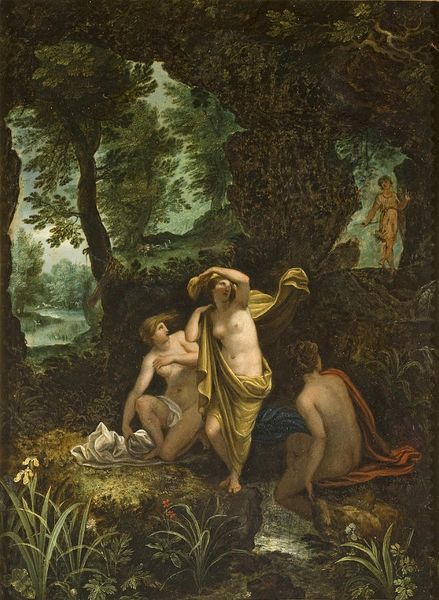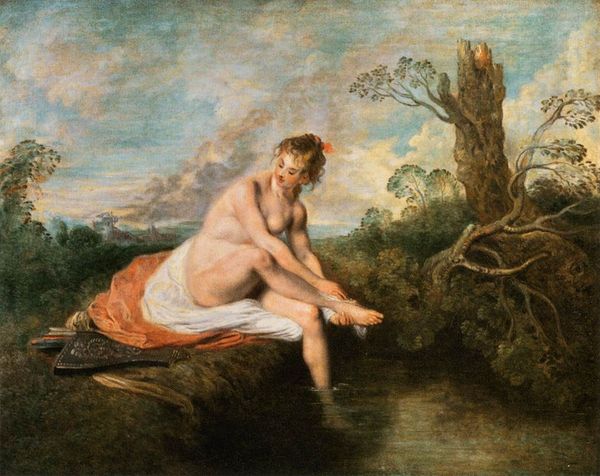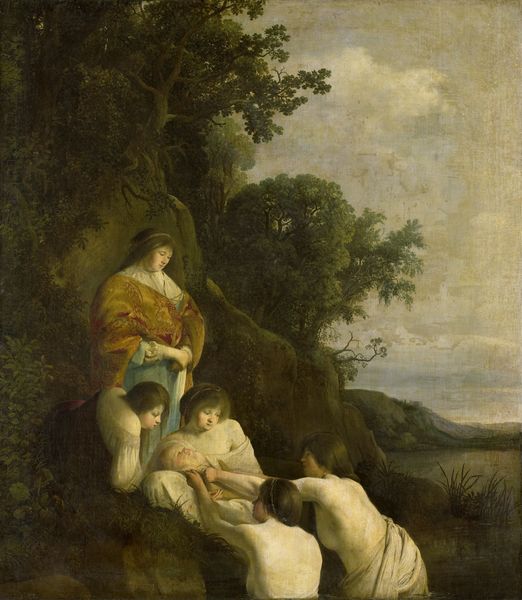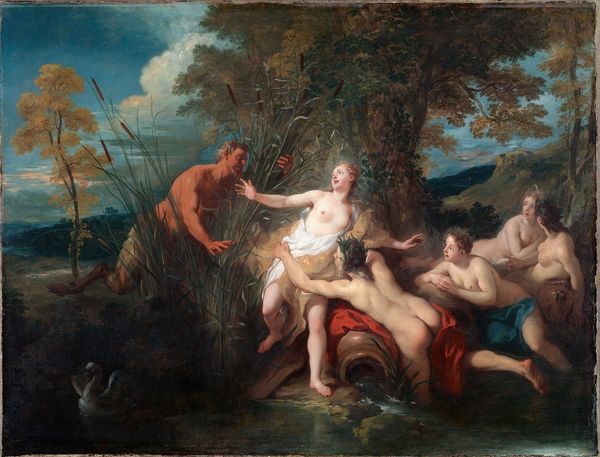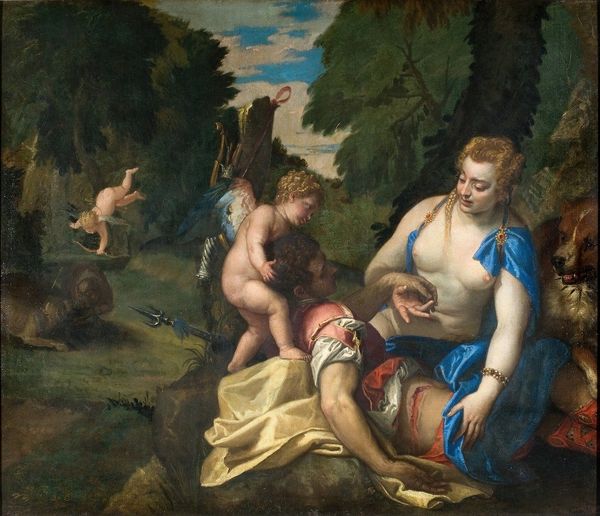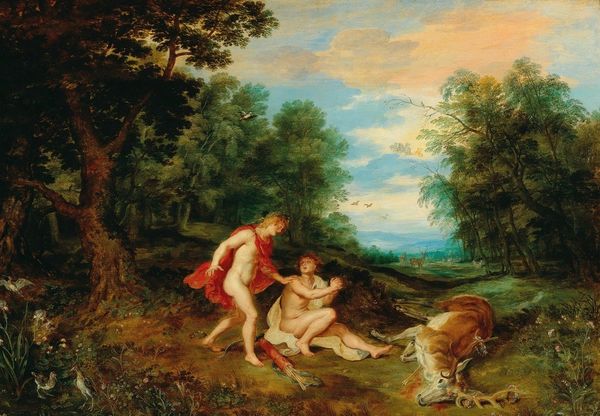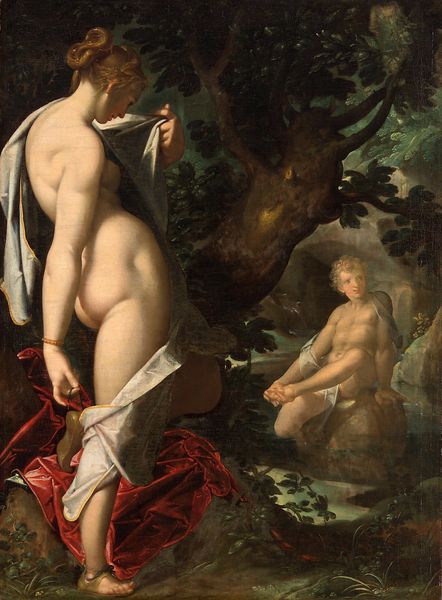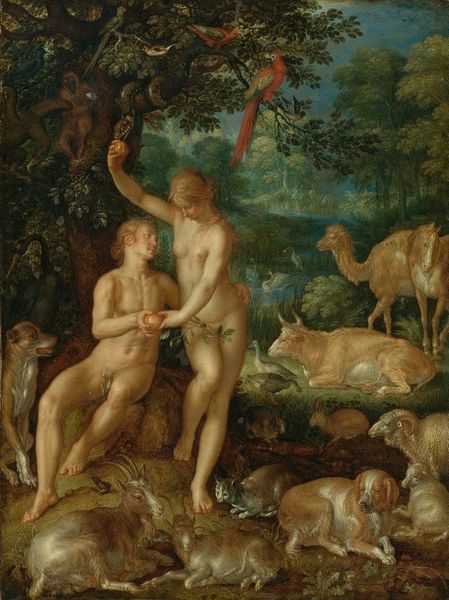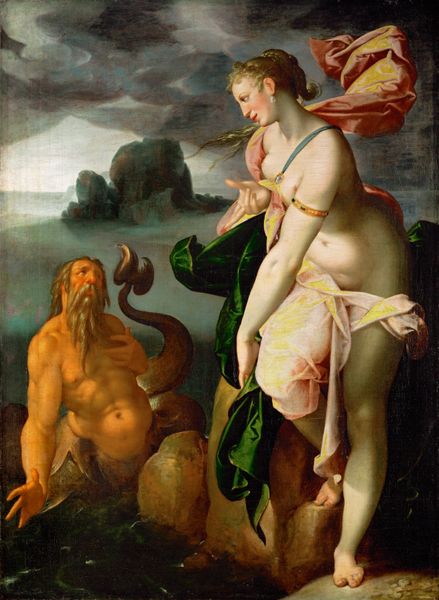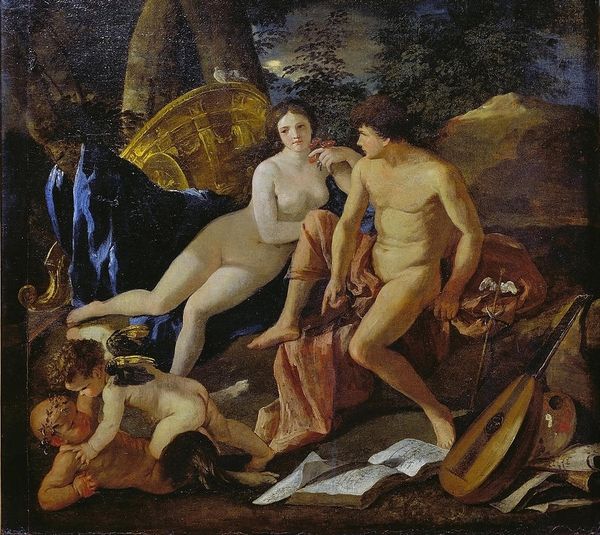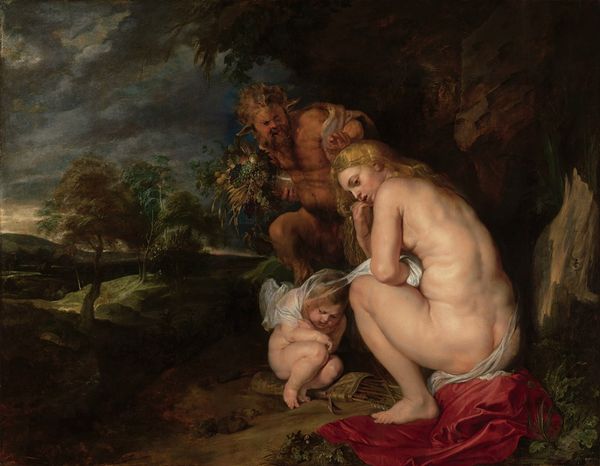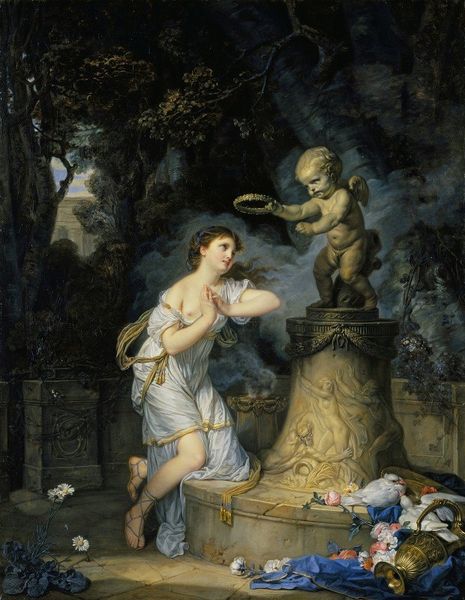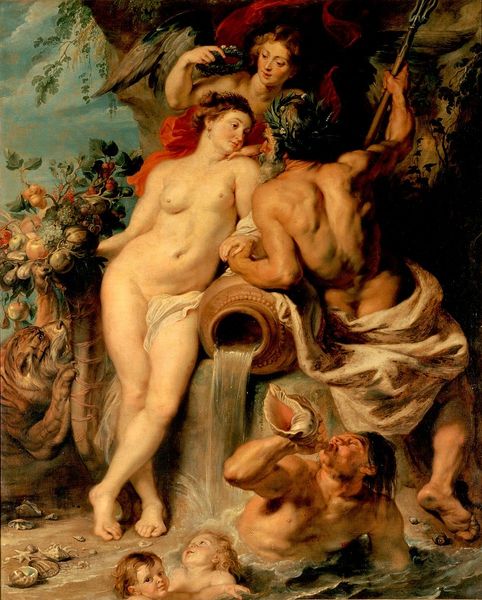
oil-paint
#
allegory
#
baroque
#
oil-paint
#
figuration
#
history-painting
#
nude
Copyright: Public domain
Ferdinand Bol painted this Venus and Cupid in the Dutch Republic, likely during the mid-17th century. Images of classical goddesses and mythological scenes, like this one, were popular among the wealthy merchant class of the Dutch Golden Age. Bol, trained in Rembrandt’s workshop, understood the market well. But it’s worth asking what these images meant in a society undergoing dramatic social change. The Dutch Republic was a Protestant nation, yet here we see a nude Venus, a subject associated with sensuality and even paganism. This painting presents a classical scene, but the specific details, like the opulent chariot, probably reflected the wealth and taste of Bol's clientele. The choice of this subject and the way it’s painted speaks to the complex negotiation between artistic tradition, social values, and the demands of the art market in the Dutch Golden Age. To understand this moment better, look at period documents. These might be merchant inventories to see what kinds of artworks were popular, and theological debates that might shed light on the relationship between religion and art in Dutch society.
Comments
No comments
Be the first to comment and join the conversation on the ultimate creative platform.
